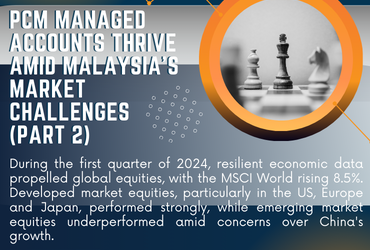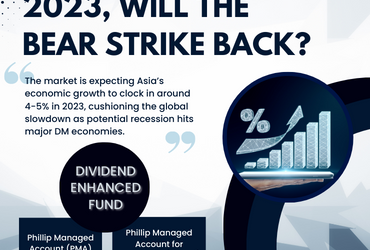
The MSCI Asia Pacific Ex-Japan Index (+5.5%) raced past the MSCI World Index (+3.1%) thanks to exceptional tech sector performance in East Asian markets. South Korea (+7.5%) dominated in September as monthly exports reached a new record high, led by double-digit y-o-y gains in both the semiconductor and automotive industries. Hong Kong (+7.1%) was not far behind, with AI tailwinds pushing up tech stocks and the overall market, as mainstays such as Alibaba rallied by roughly ~50% in September alone. Taiwan (+6.6%) was no slouch either, as a flurry of positive news flow pushed TSMC to all-time highs. The Philippines (-3.3%) was the only decliner that month, marking its third consecutive losing month as exports decelerated under tariff pressures (see Exhibit 1).
Exhibit 1: Market Performance September 2025

Source: Bloomberg, PCM, 30 September 2025
On the monetary policy front, the Federal Reserve cut interest rates by 25 basis points to 4.00–4.25%. The European Central Bank (ECB) kept its deposit facility rate at 2.00%. In Asia, the People’s Bank of China (PBoC) maintained the one-year LPR at 3.0% and the five-year LPR at 3.5%, while the Bank of Japan left its benchmark short-term rate unchanged at 0.5%. Within ASEAN, Bank Negara Malaysia (BNM) maintained the overnight policy rate (OPR) at 2.75%, whereas Bank Indonesia (BI) lowered its benchmark interest rate by 25 basis points to 4.75%.
The FBMKLCI Index gained 2.3% month-on-month (m-o-m) in September, closing at 1,611.88 points. Meanwhile, the Small Cap Index gained 5.8%, while the Mid 70 Index increased by 1.6%.
Sector-wise in September, the top-performing sectors were Utilities, Industrial, and Consumer, which rose 6.4%, 5.7%, and 5.3% m-o-m, respectively. The worst-performing sectors were Healthcare, Construction, and Finance, which gained only 0.6%, 0.6%, and 0.7% m-o-m, respectively. Foreign investors returned as net buyers in September, recording inflows of RM77 million. Separately, in September, there were two listings on the ACE Market (JS Solar Holding Bhd and Express Powerr Solutions (M) Bhd).
For the month of September, WTI crude oil plunged 2.6% m-o-m, closing at US$62.4 per barrel, while Brent oil fell 1.6% to US$67.0 per barrel. Crude palm oil closed at RM4,305/MT, nearly unchanged from the previous month, while spot gold rose 10.1%, ending the month at US$3,840.8/oz. Currency-wise, the Malaysian ringgit appreciated 0.4% m-o-m against the greenback to RM4.2072/USD. Meanwhile, the Dollar Index remained flat at 97.8 points.
Equity Market Outlook & Investment Strategy
Malaysia
We remain constructive on the Malaysia market, supported by multiple tailwinds. Expectations of a Fed easing cycle from 4Q25 into 2026 should improve global liquidity and risk appetite across Asia. Domestically, fiscal reforms are largely priced in, while resilient macro fundamentals, robust consumption, and an expanding investment pipeline support growth. Structural transformation is reinforced by key national blueprints (13MP, NIMP 2030, NSS, NETR), while Malaysia’s ASEAN Chairmanship enhances its strategic relevance. Strong local institutional flows, a firmer ringgit, undemanding CY26 P/E of 13.9x, and record-low foreign shareholding of 18.8% further strengthen the market’s risk-reward profile.
Regional
The Fed has cut rates by 25bps to 4.00–4.25% amid labour market weakness, with market consensus expecting two more cuts, bringing the federal funds rate to 3.50–3.75% by year-end 2025. That said, future cuts remain data-dependent, in our view. US equities remain supported by strong technology earnings growth, though elevated valuations could limit upside. While concerns over a potential US government shutdown persist, markets have largely discounted the risk given its historically limited impact. Asia Pacific markets may benefit from improved liquidity, but global growth and policy uncertainties may weigh on sentiment. We recommend a barbell strategy through 2025, combining quality growth opportunities with defensive income assets to navigate potential volatility.
Fixed Income Outlook & Strategy
Malaysia
Domestic bond yields are expected to edge higher in the near term, underpinned by renewed tariff uncertainty and heightened global trade volatility following Trump’s latest tariff announcement. Onshore dynamics may add to the upward pressure, with the rollout of the Budi95 fuel subsidy programme raising concerns over medium-term fiscal commitments, while the upcoming PMI release could reinforce expectations of resilient domestic activity. Taken together, these factors suggest a modest steepening bias in the yield curve, with investors likely to demand a higher risk premium to account for external headwinds and local policy developments.
Regional
In September 2025, UST yields were highly volatile, swinging between sharp declines early in the month and renewed upward pressure later on. Yields initially fell (10-year down to 4.02%) as soft PPI, higher jobless claims, and payroll revisions reinforced Fed cut expectations, alongside safe-haven demand from Middle East tensions. However, yields rebounded mid- to late month, with the 10-year climbing back to 4.17% and the 2-year to 3.66%, driven by stronger US data (firm retail sales, upwardly revised 2Q GDP to 3.8%, resilient durable goods, and robust housing) and Powell’s hawkish tone that reduced expectations of deeper near-term cuts. Fiscal concerns over a potential government shutdown and Trump’s tariff threats added to upward pressure, leaving the market biased toward a mild bear-steepening into quarter-end.
China’s 15th Five-Year Plan (2026–2030) sets a medium-term growth target of 4.5–5% YoY, positioning the economy on track toward its 2035 modernization goals. The strategy emphasizes shifting the growth model from investment-heavy expansion to a more services- and consumption-driven structure, supported by subsidies, tax reforms, and greater access to consumer credit. Industrial policy pivots toward innovation, with targeted development in semiconductors, EVs, robotics, and biotechnology, while structural reforms aim to address overcapacity through sector consolidation under the banner of “anti-involution.” The green transition remains central, focusing on grid efficiency, energy storage, and nuclear capacity expansion to balance decarbonization with security. Fiscal reforms, though moderate, are designed to reinforce local government finances via more equitable transfers, tax-base broadening, and cautious piloting of property taxes. Collectively, the plan underscores China’s intent to rebalance supply and demand, promote high-quality growth, and mitigate systemic vulnerabilities while pursuing technological leadership and sustainability.
Strategy for the month
We remain neutral on global equities, mainly the US, as elevated valuations and heavy concentration in a few mega-cap technology names limit broad market upside despite still-robust earnings growth. However, we remain constructive on Asia Pacific ex-Japan equities, particularly in North Asia, supported by a weaker US dollar and a more dovish Federal Reserve. Further easing by the Fed would give Asian central banks greater flexibility to lower interest rates, which in turn could further support regional market sentiment.
In Malaysia, we are neutral across both large-cap and small-cap equities. We have lifted small caps from underweight to neutral to reflect improving domestic flows, better earnings visibility, and a recovery in risk appetite among local investors.
Sector-wise, for the next six months, we are bullish on the Industrial and Technology sectors, which are expected to benefit from Budget 2026’s focus on infrastructure modernisation, manufacturing upgrading, and continued incentives for digital adoption. The government’s commitment to accelerate industrial transformation and strengthen Malaysia’s position in the regional technology supply chain should continue to provide earnings visibility and re-rating potential for select names within these sectors. Meanwhile, we remain underweight on the Property and Transport & Logistics sectors, as Budget 2026 offers limited direct support for these areas.
Exhibit 2: PCM’s monthly strategy snapshot

Source: PCM, 30 September 2025
Phillip Capital Malaysia and our offerings
We reaffirm our belief that there are still opportunities in the market, and we maintain a discerning approach in choosing high-quality stocks for our portfolio. However, it is crucial to exercise caution and carefully select investment options to ensure the best risk-adjusted returns. By taking a vigilant and discerning approach, investors can potentially reap the benefits of the current market opportunities while minimising risks.
A noteworthy avenue for investors seeking diversification in their portfolio is through PhillipCapital Malaysia. PhillipCapital Malaysia offers multiple private mandate services managed by professional fund managers. By leveraging PhillipCapital Malaysia’s private mandate services, investors can enhance their resiliency, optimise portfolio performance, and navigate the complexities of the market with confidence.
We also offer both conventional and Shariah-compliant options to cater to the needs of all investors. For Malaysia’s mandates, we like:
- PMART/PMA Dividend Enhanced and/or PMART/PMA Dividend Enhanced ESG
Our PMART Dividend Enhanced and PMA Dividend Enhanced is an income-driven portfolio focused on high dividend-yielding equities. We apply the Dog of the Dow approach, screen and select top market cap stocks to minimise risk and ensure consistent performance. The portfolio is an equal weighting portfolio which reduces concentration risk and provides similar exposure to all clients, both initially and after rebalancing. We offer both conventional and Shariah investment options to cater to the diverse needs of our investors. Click here to learn more. We recently also introduced PMART/PMA Dividend Enhanced ESG Mandate as we remain dedicated to investing in ESG stocks given their stronger valuation and profitability.
- PMART/PMA ESG
Phillip Capital Malaysia offers discretionary portfolio that invests in stocks with high ESG ratings from the F4GBM and F4GBMS Indices, namely PMART and PMA ESG. There are both conventional and Shariah options available. To explore the companies in which both Conventional and Shariah ESG mandates invest, you can refer to the provided link.
- PMART/PMA Blue Chip and Opportunity
Our Blue-Chip portfolios primarily allocate our investments towards companies with large market capitalisations, while the Opportunity portfolios predominantly invest in companies with smaller market capitalisations. We also offer both conventional and Shariah-compliant options to cater to the needs of all investors.
Please click on the link to learn more or email us at cse.my@phillipcapital.com.my if you require any further information.
Disclaimer
The information contained herein does not constitute an offer, invitation, or solicitation to invest in any product or service offered by Phillip Capital Management Sdn Bhd (“PCM”). No part of this document may be reproduced or circulated without prior written consent from PCM. This is not a unit trust or collective investment scheme and is not an obligation of, deposit in, or guaranteed by PCM. All investments carry risks, including the potential loss of principal.
Performance figures presented may reflect model portfolios and may differ from actual client accounts’ performance. Variations in individual clients’ portfolios against model portfolios and between one client’s portfolio to another can arise due to multiple factors, including (but not limited to) higher relative brokerage costs for smaller portfolios, timing of capital injections or withdrawals, timing of purchases and sales, and mandate change (e.g., Shariah vs. conventional). These differences may impact overall performance.
Past performance is not necessarily indicative of future returns. The value of investments may rise or fall, and returns are not guaranteed. PCM has not considered your investment objectives, financial situation, or particular needs. You are advised to consult a licensed financial adviser before making any investment decisions.
While all reasonable care has been taken to ensure the accuracy and completeness of the information contained herein, no representation or warranty is made, and no liability is accepted for any loss arising directly or indirectly from reliance on this material. This publication has not been reviewed by the Securities Commission Malaysia.






